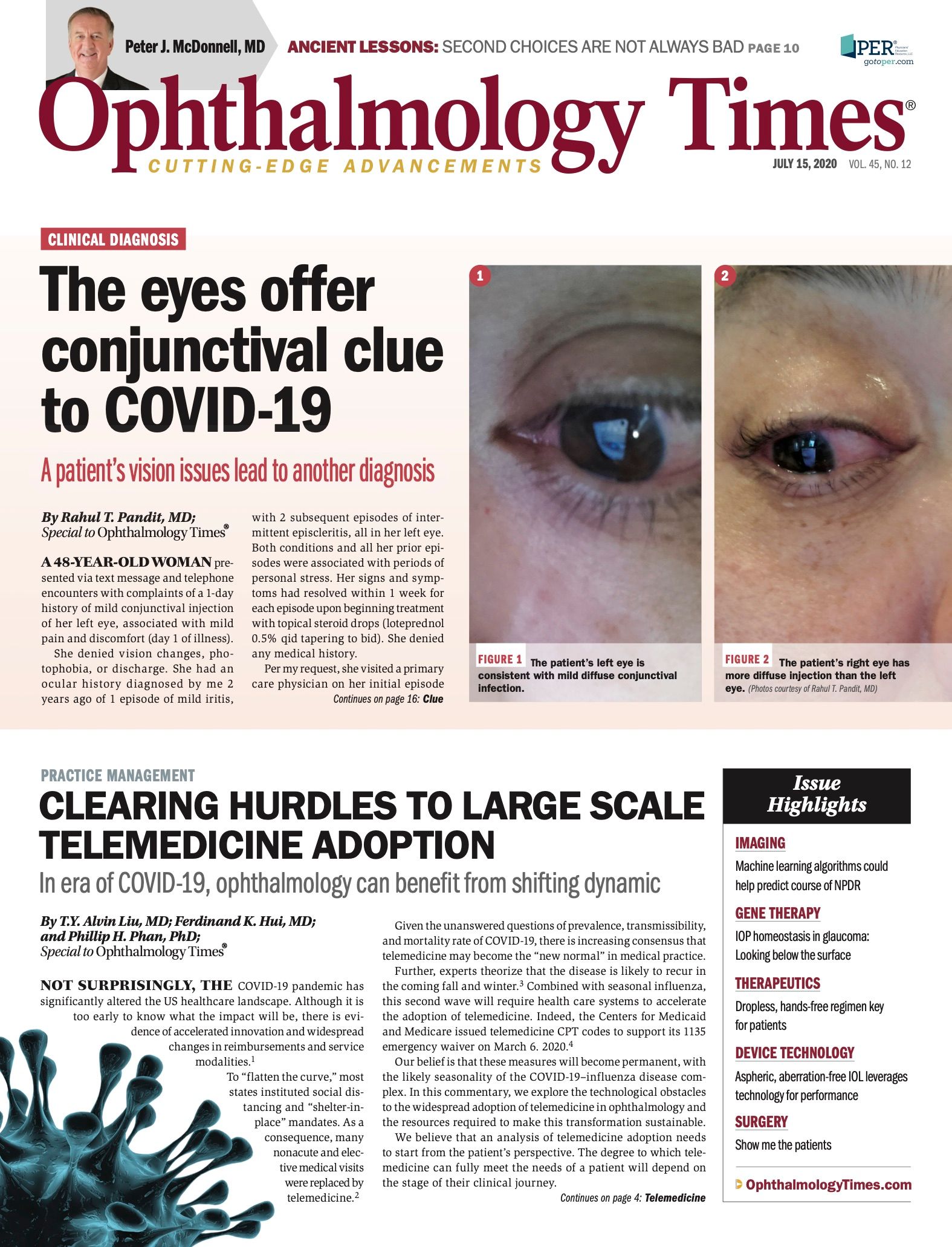Publication
Article
Digital Edition
Emerging opportunities — and risks — with telehealth in a pandemic
Author(s):
Despite current flexibility, future enforcement could prove to be troublesome

As is painfully obvious to even the most casual of observers, the COVID-19 public health emergency has been disruptive to all industries. And, the health care industry has been at the epicenter of this disruption.
Nonetheless, not all disruption is negative. One bright spot for many health care practitioners during this public health crisis has been the emergence and normalization of telehealth.
Background and context
Early in the emergence of the COVID-19 public health crisis, the Centers for Medicare and Medicaid Services (CMS) took an active role in promoting telehealth.1
This was a welcome surprise to many as CMS has historically not been quick to embrace novel technologies.
Related: Pass-through provides vehicle to drive innovation
Nonetheless, beginning in early March 2020, CMS made clear that Medicare will provide broader coverage for telehealth services.
CMS noted that telehealth visits will be reimbursed using the same billing rate as in-person visits.2
More significantly, though, CMS loosened several of the otherwise onerous requirements historically associated with Medicare’s coverage of telehealth visits.
For example, Medicare beneficiaries receiving telehealth services previously had to be located in certain types of “originating sites” and had to be located in certain, generally rural, geographic regions in order for the telehealth visit to be reimbursable.
By and large, these restrictions have been significantly relaxed through the duration of the public health emergency.
Moreover, previously Medicare required that coinsurance and deductibles would generally apply to telehealth services.
However, the Department of Health and Human Services Office of Inspector General (HHS-OIG) has noted that it will provide flexibility for health care providers to either reduce or, in some cases, waive cost sharing for telehealth visits.
Related: Clearing hurdles to large scale telemedicine adoption
In addition to some of the regulatory changes, CMS has also made clear that it will allow practitioners to use more novel communication platforms, such as Zoom, Skype, and others, to ensure telehealth coverage.
The relaxing of technological requirements has opened a new world of software to be utilized and, correspondingly, has made it easier than ever for beneficiaries to take advantage of telehealth.
While CMS and HHS-OIG have offered much needed regulatory flexibility, the risk of enforcement still looms large. Many physicians have learned by painful experience that the failure to strictly comply with Medicare’s rules can be costly.
And, therefore, practitioners would be well-served to err on the side of caution and tread carefully in embracing these new technologies. Several practical tips for physicians include the following:
All telehealth visits need to ensure that proper documentation is being captured to justify the billing and medical necessity of the visit. A best practice is to update templates for certain office visits that utilize telehealth.
Related: Pearls for managing COVID-19 pandemic north of the border
These templates should include fields that indicate, for example, the method of communication used, confirmation that an audiovisual connection was maintained throughout the entire office visit, and a generalized assessment and plan that clearly indicate the care provided during the telehealth visit.
The rigor for expansive documentation is needed more than ever in the telehealth setting where prosecutors and regulators have historically cast a skeptical eye.
Practitioners would be well served by ensuring that they have a process in place to make sure that patients are informed of risks associated with telehealth visits and that patients fully attest to their consent of using telehealth.
While patients will only presumably engage in telehealth visits voluntarily, documenting the acknowledgement of inherent risks associated with data transmission (such as hacking, data privacy concerns, etc) is a best practice.
Practices still need to comply with the Health Information and Portability Accountability Act (HIPAA). Therefore, practitioners must remember that strict adherence to HIPAA is mandatory.
Related: Amid COVID-19 pandemic, telehealth patient satisfaction high, could drive future access
Where the government has previously been harsh on telehealth, the government has focused on perceived reflective ordering habits—such as when all telehealth beneficiaries receive, for example, certain durable medical equipment.
Therefore, in each instance that a patient receives a service or referral, the practitioner should clearly document the need for such service and, to the extent practicable, the justification for the service should be tailored to the patient’s individual needs.
Health care practitioners should remember that there are certain documentation requirements specific to telehealth.
Health care practitioners would benefit from scheduling consultations or appointments with their electronic health record (HER) vendors to ensure that the EHR platform has the capability to properly record telehealth-specific information.
Most EHR vendors are very willing to schedule these meetings and consultations.
Finally, practitioners must maintain compliance with not only the relaxed federal regulations, but also their individual state-specific laws.
Related: How one surgeon is integrating recent retina advances in COVID-19 (ASRS 2020)
Next steps
While it is premature to speculate how COVID-19 will continue to affect the country and the health care industry, it seems apparent that the normalization of telehealth is here to stay.
And, if COVID-19 brings positive disruption, many health care professionals are hoping that telehealth will be utilized, and appropriately reimbursed, in the years to come.
CMS’ commitment to regulatory flexibility and innovation has been admirable. It is a welcome change to see CMS acknowledge these emerging technologies and re-shape practical regulations to meet these new times.
Related: COVID-19: Companies offering new technology to connect physicians with patients
While this flexibility has been promising, the wave of potential enforcement still is ominous for many practitioners who have experienced regulators and prosecutors’ past wrath.
Therefore, as the old adage goes, an ounce of prevention is worth a pound of cure. Never has this adage been more relevant than when deploying new health care technologies.
This article was originally published in:

About the author
Jason Mehta is a partner with the Tampa, Florida office of Bradley Arant Boult Cummings LLP and a former assistant US attorney for the Middle District of Florida. He advises companies and individuals facing government inquiries and investigations. He can be reached at jmehta@bradley.com.
References
1. COVID-19 Partner Toolkit available at https://www.cms.gov/outreach-education/partner-resources/coronavirus-covid-19-partner-toolkit.
2. Medicare Telemedicine Health Care Provider Fact Sheet available at https://www.cms.gov/newsroom/fact-sheets/medicare-telemedicine-health-care-provider-fact-sheet.

Newsletter
Don’t miss out—get Ophthalmology Times updates on the latest clinical advancements and expert interviews, straight to your inbox.




